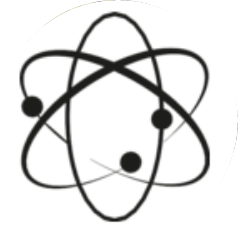Read the following paragraphs and answer the question.
It began as just another research project, in this case to examine the effects of various drugs on patients with a severe mood disorder. Using an advanced brain scanning technology—the clumsily named echo-planar magnetic resonance spectroscopic imaging (磁共振光谱成像) procedure, or EP-MRSI -researchers at Boston’s McLean Hospital scanned the medicated and unmedicated brains of 30 people with bipolar disorder in order to detect possible new treatments for the more than 2 million American adults who suffer from the disease.
But something unexpected happened. A patient who had been so depressed and could barely speak became ebullient after the 45-minute brain scan. Then a second patient, who seemed incapable of even a smile, emerged actually telling jokes. Then another and another. Was this some coincidence? Aimee Parow, the technician who made these observations (she is now a medical student in New York) didn’t think so. She mentioned the patients’ striking mood shifts to her boss, and together they completely refocused the study: to see if the electromagnetic fields might actually have a positive effect on depressive mood.
As it turns out, they did. As reported last month in the American Journal of Psychiatry, 23 of the 30 people who were part of the study reported feeling significantly less depressed after the scan. The most dramatic improvements were among those who were taking no medication. The researchers are cautious: Says Bruce Cohen, McLean’s president and psychiatrist in chief: “I want to emphasize that we are not saying this is the answer...but this is a completely different approach in trying to help the brain than anything that was done before.”
It’s a completely different approach because of the way the magnetism is applied to the brain. But it’s an example of new research on an old idea that the brain is an electromagnetic organ and that brain disorders might result from disarray in magnetic function. The idea has huge appeal to psychiatrists and patients alike, since for many people the side effects of psychiatric drugs are almost as difficult to manage as the disease itself. And 30 percent of the nearly 18.8 million people who suffer from depression do not respond to any of the antidepressants available now. People with other severe mental disorders might benefit as well. And while no one fully understands exactly why or how the brain responds as it does to electrical currents and magnetic waves, new research is offering some possible explanations.
This area of psychiatric research and treatment has an unpleasant history to overcome. “Shock treatment,” technically known as electroconvulsive therapy (电休克疗法) or ECT, has been around since the 1930s, but it carries with it an unpopular public image which comes mostly from horrible movies. And in fact, it was in the early days a brutal procedure. But research on the magnetic brain has led to improvements in such treatments, and their use is on the rise. In 1980, 30,000 people received ECT; in 2001, nearly 100,000. Although there are still side effects - headaches and memory problems primarily - the days of bitten tongues, and broken bones are largely a thing of the past. And the response rate, especially for treatment of drug-resistant depression, is as high as 70 percent.
The passage mainly( ).
A.
reports a discovery
B.
challenges a discovery
C.
explains the problem with a discovery
D.
describes the background of a discovery
正确答案是A
